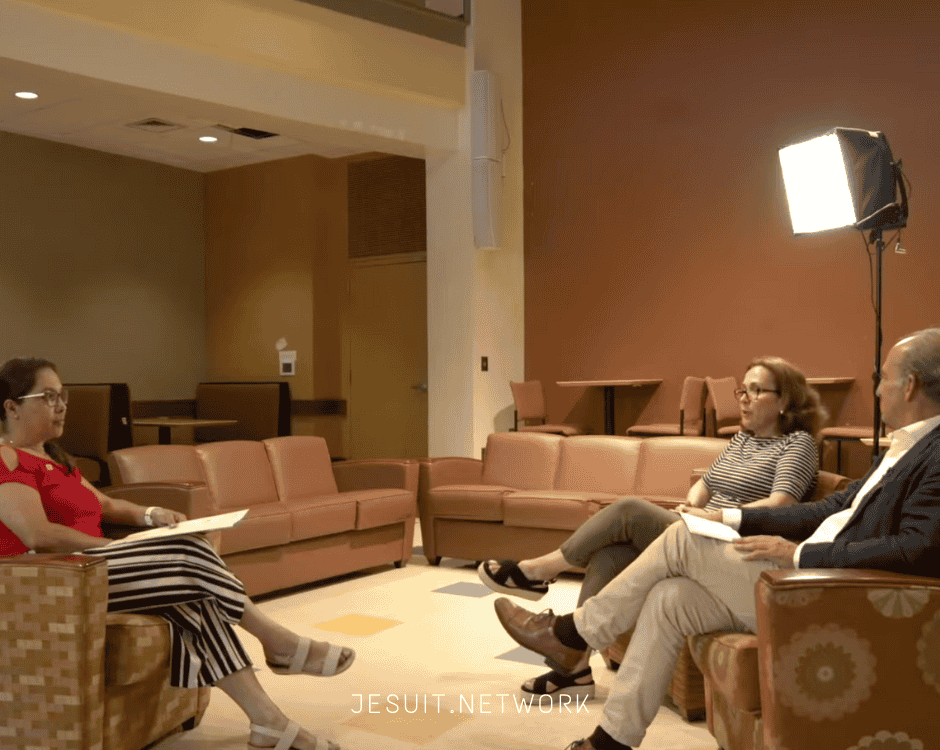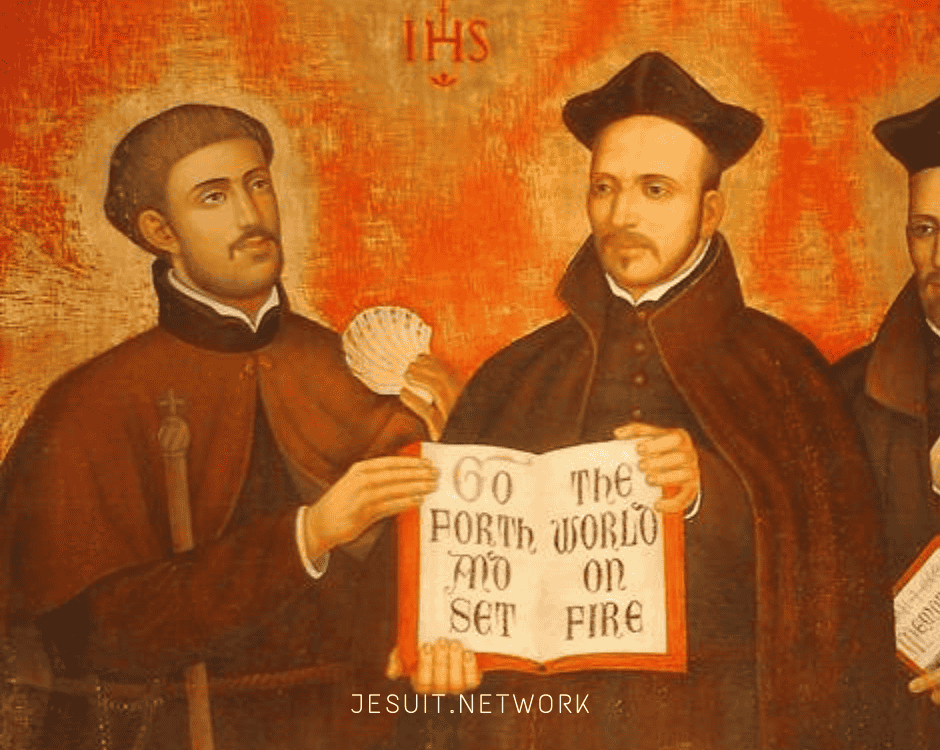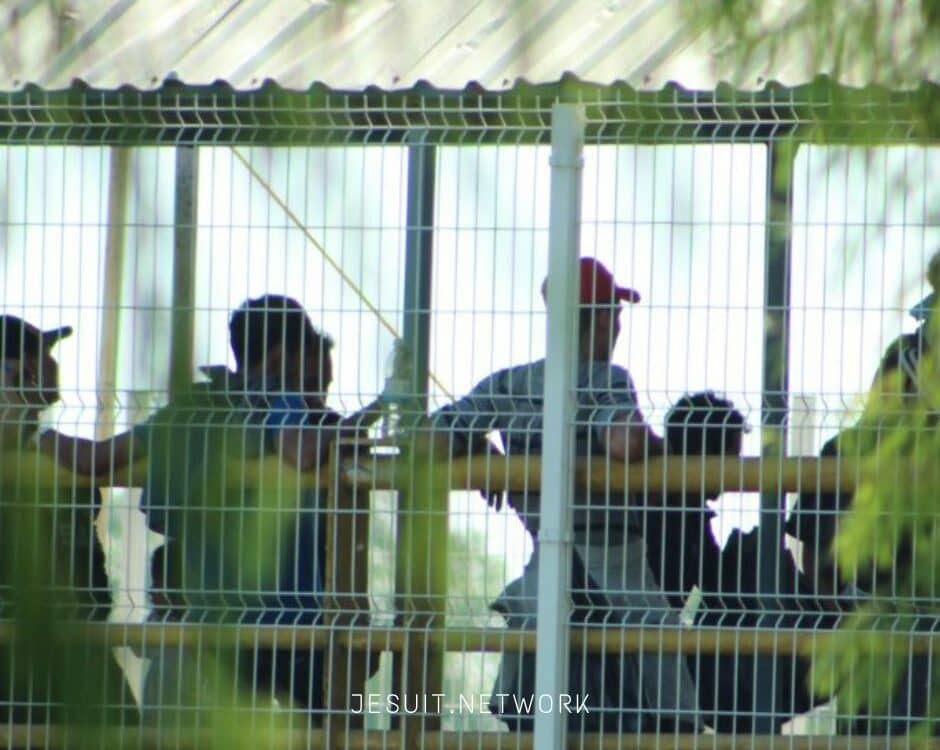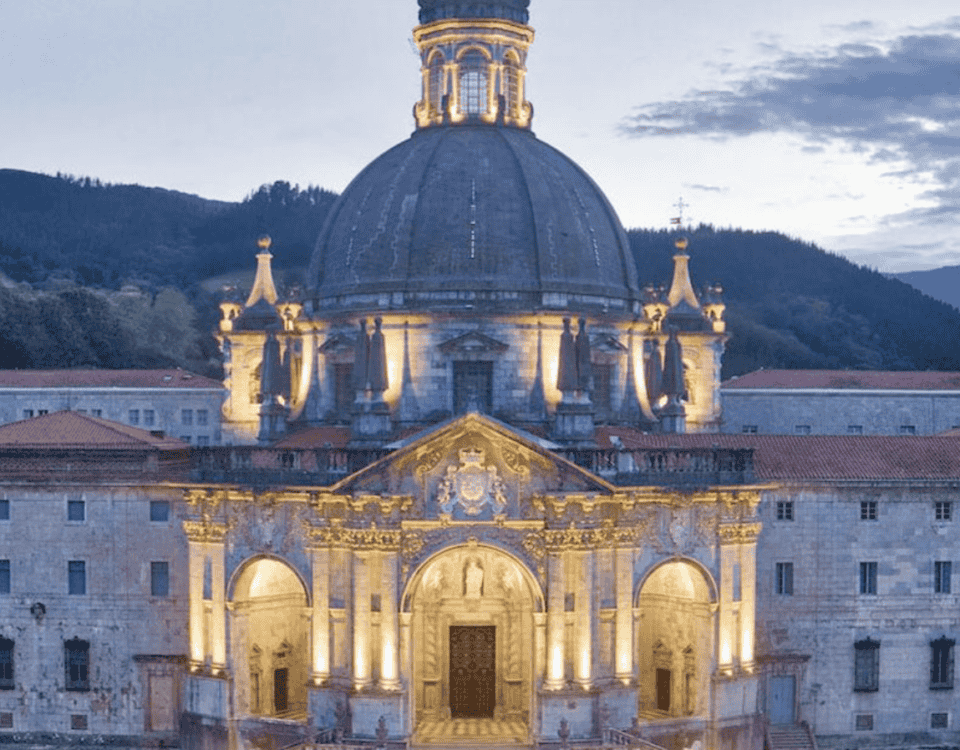Este sitio web utiliza cookies para que podamos ofrecerle la mejor experiencia de usuario posible. La información sobre cookies se almacena en su navegador y realiza funciones como reconocerle cuando vuelve a nuestro sitio web y ayudar a nuestro equipo a comprender qué secciones del sitio web le resultan más interesantes y útiles.
Interview: digital communication for collaboration during GC 36
2016 was an important year for the Society of Jesus. During the months of October and November, its 36th General Congregation was celebrated. Besides electing Fr Arturo Sosa as the new Superior General, the Jesuits discussed the challenges facing the order in the coming years and some general questions regarding the direction of its mission. The Society is an important and influential body within the Catholic Church, and many people were interested in this new General Congregation. And many of us where able to follow its progress each day thanks to intensive and generous digital coverage.
We wanted to learn a bit about how the digital strategy for this event was planned. And we have been lucky enough to be able to speak with the co-ordinator of the communication team for the Congregation: the Spanish Jesuit Dani Villanueva, who is also director of Entreculturas, an NGO working in education and development.
entreParéntesis: How did the idea of giving such wide coverage to the 36th General Congregation areis within the Society itself?
Dani Villanueva SJ: Every General Congregation has had its communication strategy. There’s nothing new about that. What’s different today is the new media that have become available and a shift in the culture of communication both in the world at large and in the Society itself. In 1995, GC 34 sent a fax to each province ever few days with the news. In 2008, we had a small site for GC 35 that was very well received by its audience. It was updated in four languages several times a day, with real-time news. At the same time we ventured tentatively into Facebook, which at the time was in the process of going international.
For some years, therefore, we’ve known that GC 36 would be the time for videos and networks. This time we wanted to be in control ourselves of telling the story of GC 36 in such a way as to provide ways for people to pray, to know what was happening, and to be alongside the Society of Jesus at what would be such an important moment. As early as December 2015, the co-ordinating committee of GC 36 asked a team of us to begin preparing for the task of communication. There was a clear steer towards transparency, and no limits were set on our use of the possibilities offered by digital media. Once that go-ahead was given, we got to work.
What were the challenges you faced in trying to make the Congregation so widely visible?
The major challenge was to develop a good strategy that would allow us to open the Congregation up to the public – creating and steering the way people saw it – while at the same time respecting the requirement that the process of corporate discernment that was happening not be unduly influenced. Traditionally, a General Congregation has taken place discreetly, with nothing being communicated. This is not because of fear that the world will get to know what we are doing, but because of need to ensure that public opinion not interfere with the discernment taking place. There is no doubt that this was the principal challenge. Part of this was that the members of the Congregation themselves were fully online during the meeting, and were thus part of the communication ecosystem.
Another challenge was that of communicating from one single source to the global Society of Jesus, present as it is in 110 countries. Just imagine what this means in terms of languages, time zones, different levels of connectivity, and – above all – different cultures and sensibilities. Our option was to have one single source in Rome with information in as plain as form as possible. This would serve as raw material for communications offices in individual provinces and countries, or for conferences of provinces over a group of countries, throughout the world.
So Rome was creating content, but provincial and regional offices were processing it, using the Society’s local resources. We are very pleased with how it all worked. The interview with Fr General, for example, was published on the same day both on the Congregation’s website and in more than sixty media (printed or digital) sponsored by the Society. It was launched in eight languages. We could only this by working, from the outset, with a network of Jesuit offices of communication throughout the world.
In this same connection, we had the challenge of different languages. We produced content in four official languages: English, Spanish, French and Italian. During the months before the Congregation we recruited volunteers who could do the translation from long distance, and we set up a network of more than 60 people. This—though it might not seem so—was the major challenge facing our resources. We had one person employed almost full time on co-ordinating content and translations. We have always said that what emerged was the work of many people – and we weren’t just saying that, as you can see.
Another interesting challenge was responding to the different publics. Was it right to differentiate between what we were saying to Jesuits in house, to the Society’s communications offices, to our institutions, to people working with us, to the media at large? We did quite a lot of work among ourselves before deciding to develop just one single line of information that could be open to all the interested publics.
Initially we were tempted to run an intranet for Jesuits only—in other words to send different contents to different publics. But finally we decided to approach the issue from the other side, and let the users decide how often and how deeply to connect with the Congregation. We therefore took the initiative in sending material to all the press offices and the provinces, but also in allowing anyone interested in following the Congregation to subscribe to the same channel as everyone else. In this way we were allowing different levels of communication. Provinces and regions could follow their own communication strategies. At the same time groups interested in a more intense experience of communication could be directly linked.
The result was very surprising. More than 10,000 people signed up directly for the daily bulletin, and another 10,000 followed what was released on social media. The only differentiation we made was to send press releases to the main international media agencies in Rome, and also to send some of the official announcements, such as the naming of the new General, as a matter of courtesy, to the provinces through the Society’s standard channels a few minutes before issuing a public notification through the channels specifically set up for the Congregation.
What media did you choose to spread the message?
The most important challenge in designing the media for our strategy was the different levels of connectivity, access, and technological culture in different parts of the world. We could not take for granted the kind of bandwidth that would make streaming possible. At the same time, an attractive story in a digital world required narrative formats appropriate for the age of blogs, YouTube, Facebook and Twitter.
We therefore decided to place all the work on one single digital platform (gc36.org), that would serve as a hub for all the channels. We distributed the material in two different ways: social channels in real time, and a daily bulletin with the main things that had been published each day. In this way, we were trying to respond to the main patterns of usage that had been detected. Given the most common profile among our users, it is not surprising that the largest sector of the public (33.9%) accessed material through an e-mail bulletin. But it is also striking that 43% were using tablets or mobile phones, and that 23% interacted with our content through social networks.
Thus, as I’ve been saying, our plan didn’t distinguish between our publics. We designed channels that would provide for the Society’s network content of the following kinds:
- An official channel with daily news and updates.
- A channel of direct first-person narratives: a daily blog written by the delegates themselves
- A video channel with interviews, and coverage of the main events
- A photo channel covering the Congregation intensively
- Access to the official documents produced: homilies, speeches, interviews
- Material and digital space for prayer with the Congregation
- Social networks that would promote and spread the content, and foster interaction and engagement.
Regarding specific content for the press and the media, we worked in four ways:
- Press releases for the main events
- Press conferences at the beginning, after the election of the General, and at the end
- Streaming coverage of the Mass of Thanksgiving after the election
- Written interviews for publication: one with Adolfo Nicolás before the Congregation and one with the new Fr General after the election.
Our strategy for linking up with provinces and media organizations around the world included the recruitment of an international team of Jesuits and co-workers who were specialists in communication. To cover GC 36, we needed a team in Rome that could take photos, film and edit videos, produce content, run digital channels, and co-ordinate a growing team of writers and bloggers in four different languages. Thanks to the generosity of provinces and institutions, the final team was made up of 12 professionals, Jesuit and lay, from Canada, Germany, Italy, Nigeria, Spain, the US, and Zambia.
The Congregation showed us once again that we make up a body that is essentially international. It’s connected. It is both able and willing to dialogue, discern, and make things happen in collaboration.
What came across was at once a very great respect for all that was happening and a clear wish to provide information. Did the Jesuit delegates themselves take part in this?
For reasons explained earlier, we had to maintain a delicate balance between the Congregation’s internal dynamic and the public story being told. We worked on material that would help people reflect in such a way as to enter into the Congregation’s process but without talking directly about what was going on in the Aula. Thus there were interviews and articles that were discreetly shedding light on what was happening in the Congregation, setting out historical contexts, explaining particular traditions, pointing out aspects of our mission. And interviews enabled individual members of the Congregation to have their say on particular themes and at particular moments.
On the other hand, we couldn’t imagine coverage of the Congregation without something coming from the inside. So we decided to create a first-person blog written by delegates on the basis of what they were actually experiencing. We invited 15 members to write, with very clear rules about the type of content that could be published. They couldn’t talk about the results of votes, about particular exchanges in the Aula, or in general about matters that were under discussion in the Congregation and not settled. The result was a success, and among the various channels used by the Congregation, it was the blog that generated the most engagement. There’s no question that it was the most widely read and reproduced element out of everything we produced.
We also had continuous access to the Congregation Aula, and a direct link to the co-ordinating committee. The Congregation itself set up an editorial committee of three delegates. This helped us a great deal when it came to thinking about themes and perspectives for which any publication involved a policy decision.
How did you get the idea of broadcasting the Congregation’s daily prayer? What was the reaction?
An interesting question. From the start one of our clear objectives was the stress we wanted to put on the spiritual dimension of the experience. The General Congregation is a unique chance to experience the universal Society. For a few brief weeks we have a privileged way of seeing and hearing our international apostolic body as a whole. For that reason, it was important to offer ways in which people could feel united with the Congregation, feel part of it, accompany it, participate in it, especially at the level of prayer and of union of minds and hearts. That was why we opened a virtual “Prayer Room”. The main point was that people could take part in the Congregation’s daily prayer.
We thought it important, too, to cover this in video. Again, the result really surprised us. Of all the video production, the daily prayer sessions were the most watched. It’s strange. At the beginning, people were a bit bashful praying in front of the cameras. But it ended up being a precious symbol of our union with the whole body that itself was also praying, and was sharing with the Congregation that initial half hour of the day.
Did you have a uniform strategy that lasted through the whole Congregation, or did you approach the task in different ways at different stages?
The Congregation had different objectives and dynamics at its different stages. This meant some differences in our communications strategy.
- In the first phase, our main aim was to promote the different media of communcation, and to get across the particular ways in which a General Congregation works.
- In the second phase, we were concentrating on the Election. We stressed the particular character of the murmurationes, and the role of prayer and discernment in the Congregation.
- After the election we spent a week focusing our content around the personality, life-story and profile of the new Fr General
- In the ad negotia phase we concentrated on the Society’s orientation to global needs, on themes of government and structures, and on particular aspects of our apostolic mission.
- Finally, once we got into November, we were focusing on the fruits of the Congregation, on how the discussions were coming into land and solidifying into decrees, on preparing people to receive the various outcomes, and linking in our ways of working with what the Society has in place for regular ordinary communication.
Presumably lots of people asked you questions about the Congregation and indeed about the Society in general. How did you respond to their concerns?
One major success story of the Congregation as regards communication was that people got the message that what was happening was a very important exercise in corporate discernment for the future, and hence that lobbying or pressurizing were out of place. When people asked us questions we normally batted them down to the province or continent from which they’d come, given that practically all of them were really about local issues. Even if they were about wider questions, they needed to be dealt with from within the culture and distinctive mindset from which they had come.
You cannot be a global body today without an internal communication structure that enables us really to be a network, with each part being able to speak for the whole in a way that is sensitive to local factors.
What developments in the Society’s digital communication are you hoping for from this Congregation?
Digital communication during the Congregation enabled us to send a message to the whole Society and to our whole apostolic body: you can communicate maturely, constructively, apostolically, and thereby help build up a common identity and make the apostolic body more coherent. Let me be honest. We are hoping to be able to open up in new ways the discussions about the need for a style of corporate communication that is much more developed and strategic than what we have at the moment.
You can reach Dani Villanueva SJ through his Twitter account @danivillanueva
This post was originally published in Spanish here.





